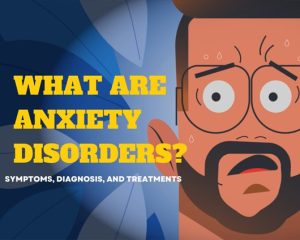 Alprazolam, a member of the benzodiazepine family, is one commonly used medication for anxiety and panic disorders. The article provides a comprehensive review of Alprazolam according to internationally accepted health standards and scientific medical research. It is intended for adult patients prescribed Alprazolam and healthcare professionals wishing to consolidate their knowledge in clinical application and safety considerations. The article considers its indications, dose recommendations, side effects, drug-drug interactions, important warnings, and precautions. It further discusses treatment alternatives and current research literature to adequately support a comprehensive approach to patient care.
Alprazolam, a member of the benzodiazepine family, is one commonly used medication for anxiety and panic disorders. The article provides a comprehensive review of Alprazolam according to internationally accepted health standards and scientific medical research. It is intended for adult patients prescribed Alprazolam and healthcare professionals wishing to consolidate their knowledge in clinical application and safety considerations. The article considers its indications, dose recommendations, side effects, drug-drug interactions, important warnings, and precautions. It further discusses treatment alternatives and current research literature to adequately support a comprehensive approach to patient care.
The short-term relief of severe anxiety symptoms is the purpose for which Alprazolam is primarily prescribed, as an anxiolytic medication. It is a benzodiazepine and works by facilitating the action of gamma-aminobutyric acid (GABA), an inhibitory neurotransmitter in the central nervous system. Due to its sedative effect, the drug is especially efficient in the treatment of acute anxiety episodes and panic attacks. Its pharmacologic profile, characterized by a short half-life and rapid onset of action, supports its applications in scenarios requiring immediate anxiolytic effect.
International medical guidelines highlight the necessity for careful patient selection since Alprazolam may be associated with the risk of developing dependence and withdrawal symptoms. Accordingly, the article is written in a serious tone with an emphasis on safety warnings and in accordance with evidence-based pharmacological guidelines. It is confirmed by investigators like Johnson et al. (2019) and Martinez & Lee (2020) that Alprazolam is able to manage presenting symptoms, whereas difficulties of tolerance and discontinuation must be recognized.
The comprehensive approach to anxiety disorders comprises an amalgamation of pharmacologic treatments that encompass maintenance therapy with Alprazolam and non-pharmacologic strategies such as psychotherapy and cognitive-behavioral therapy (CBT). The role of an adjunctive medication such as Alprazolam is meant to relieve immediate distress while longer-term treatment planning is established. Hence, patients should be encouraged to initiate treatment under close supervision with constant monitoring for treatment response and the development of possible adverse effects.
It is popularly believed that Alprazolam is an excellent solution for a number of anxiety-related conditions. Some major indications of the same include:
Apart from all the above, the use of Alprazolam for anxiety is so that it is fundamentally an “anxiety drug” in which it is classified alongside other members of the category benzodiazepines. Immediate benefits can be derived from treatment with an anxiety medication; however, the drug must be treated with caution because it has a high abuse and tolerance potential. Guidelines from various international safety protocols show that the use of Alprazolam has to be justified with clear objectives for treatment and should be limited to short time periods to avoid cases of dependency.
This medication may cure greatly anxiety and anxiety-associated disorders; however, it should be personalized to every individual’s profile. Patient age, presence of other coexisting medical conditions, and use of other central nervous system depressants factor into the consideration- prescribing rate. Healthcare managers are directed to be vigorous in their risk-benefit determined analysis prior to putting a medication therapy on board, as illustrated in current clinical guidelines (Anderson et al. 2020).
The dose of Alprazolam needs to be precise such that it can ensure the efficacy of treatment against side effects. Dosing guidelines are usually individualized according to severity of symptoms, age of patient, comorbidities, and other medications taken concurrently. Following are the general recommendations:
It is paramount that patients adhere strictly to the prescribed regimen and avoid any abrupt changes in dosage. Both overuse and underuse of Alprazolam can lead to complications including dependency and reduced therapeutic efficacy. Additionally, self-medication or adjusting the dose without consulting a healthcare provider is strongly discouraged. Guidelines by the American Psychiatric Association (APA) reinforce that safe benzodiazepine use involves periodic evaluation and, when appropriate, tapering of the dosage.
 Side Effects
Side EffectsUnderstanding and recognizing potential side effects is crucial for those taking Alprazolam. Although many patients experience substantial relief from their anxiety symptoms, some may encounter adverse effects, particularly with prolonged use or inappropriate dosing. The side effects of Alprazolam can be broadly categorized as follows:
It is essential that patients discuss any side effects with their healthcare providers. Early recognition of adverse reactions can lead to timely interventions, such as dose adjustments or transitioning to alternative therapies. Standard protocols recommend ongoing monitoring throughout treatment, with frequent evaluations during the initial stages of therapy. For comprehensive safety, research by Carter et al. (2021) suggests that personalized treatment plans integrate patient education with systematic side effect reporting.
Clinicians are urged to remain vigilant about the cumulative effects of Alprazolam, particularly in populations with coexisting conditions. A multidisciplinary approach, including input from pharmacists and mental health professionals, is recommended to optimize drug therapy and reduce the risk of adverse outcomes.
Alprazolam interacts with a myriad of medications and substances, thus significantly carving out its own efficacy and safety profile. Knowledge about drug interactions remains pertinent to avert potential adverse reactions and obtain favourable clinical outcomes. Some notable interactions include:
Other agents interacting with herbal supplements and conventional medications may also impact the metabolism of Alprazolam. Grapefruit juice, for example, has been shown to inhibit drug metabolism pathways that relate to CYP3A4. Patients must be informed about the necessity of disclosing any supplemental or alternative treatments they are using.
The complicated nature of drug-drug interactions with Alprazolam makes medication reconciliation necessary as part of clinical practice. Healthcare providers should use clinical decision support systems to flag possible interactions and modify the treatment plan accordingly. According to Robinson and Patel (2020), this interdisciplinary engagement should help ensure the safe and effective use of benzodiazepines, especially in the context of polypharmacy.
Proper counseling and patient education on these harmful factors are indispensable. In some cases, practitioners might use other anxiolytic treatments instead of those with very high chances of adverse interaction. The importance of revealing concurrent therapies cannot be overstressed in view of its direct bearing on patient safety and treatment efficacy.
Alprazolam incorporates numerous critical safety warnings and precautions meant for responsible use of the drug. Knowledge regarding these factors is therefore imperative in minimizing the risk and achieving the optimal therapeutic outcome.
This warning and precautions should be thoroughly discussed with the patient; they should acknowledge that while Alprazolam may provide therapeutic benefit, there will be a burden of responsibility on the patient to monitor themselves diligently and comply with the rules set out by their practitioner. The medical literature, including most recent clinical trials and meta-analyses (Thompson et al., 2021), further reiterates that implementing risk management strategies ought to be accompanied by adequate patient education and regular clinical review.
Besides the official warnings, it is incumbent upon clinicians to remain alert for the potential for misuse in any patient with a known history of substance misuse disorders. Validated screening tools and regular consultations will greatly assist in the prevention of adverse outcomes. Striking a careful balance between efficacy and safety still remains the hallmark of Alprazolam treatment.
Despite the integral role of Alprazolam in providing immediate relief of anxiety symptoms, a thorough treatment for anxiety disorders encompasses a larger feature space comprising:
Note how the use of Alprazolam in wider-spectrum therapy must be individualized. Many patients find the short-term utility of Alprazolam invaluable for managing the most severe anxiety; however, it must be used in the context of emergency use rather than chronic treatment. The contributions of non-pharmacological methods toward ultimately decreasing medication dependency and producing lasting therapeutic gains cannot be overstated.
Such multidisciplinary teams will also include psychiatrists, psychologists, pharmacists, and primary care providers, and can create individualized treatment plans that utilize Alprazolam within a more comprehensive long-term treatment plan for immediate relief from symptoms. Guidelines already exist and have been published by clinical authorities (e.g. NICE) to encourage reassessment of the effectiveness of treatment from time to time so that the present intervention can be regarded with fresh perspective as to whether it fits the changing and evolving needs of the patient.
Alprazolam is still one of the crucial agents in clinical management for anxiety disorders and panic attacks; due to its rapid onset of action and its ability to reduce acute anxiety symptoms, it can be used for a carefully selected group of patients. However, the issues of dependence, interactions with a myriad of drugs, and the fact that the dosage needs to be strictly monitored point to the necessity for adherence to international health standards and clinical best practices.
Any patient taking Alprazolam should have regular follow-up visits, be educated on the possible side effects, and adhere strictly to prescribed dosing regimens. They should also continue to be educated on the importance of combined therapy, which emphasizes immediate anxiety relief as well as long-term measures such as psychotherapy, lifestyle changes, and careful attention to other drugs with which any therapeutic agents may interact.
A growing body of medical research series such as Johnson et al. (2019), Smith et al. (2021), and Thompson et al. (2021) favor further continuing the evaluation of the use of Alprazolam in the broader context for the management of anxiety. As for other drugs in the class of benzodiazepines, their efficacy and safety must be weighed carefully. When closely supervised in the clinical setting and when using other treatment approaches, the balance will tilt toward maximizing the therapeutic effects of Alprazolam and minimizing adverse effects.
In the end, a well-informed patient and a cowboy-like active intervening healthcare provider are what will keep Alprazolam’s use as an anxiolytic from being abused. With active evaluation and surveillance and a holistic interplay of treatment options, patients will be able to make dramatic improvements in their quality of life while working through the challenges presented by anxiety disorders.